News
Innovative, Zero-Emissions Air Conditioner Will Help Keep Rural Homes Cool In India

In India, approximately 20 percent of the population — or 1 in 5 people — live in poverty. To that demographic, comforts such as air conditioning a nearly unheard of because of their expense. As you might suspect, this can be troublesome. During the summer, certain regions can average temperatures around 32–40 °C (90–104 °F). As a result, the sweltering heat is often times unbearable. Fortunately, an eco-friendly and economical solution — which just happens to be aesthetically pleasing — has been invented, and it could be a game-changer for hundreds of thousands.
Arch Daily reports that the cooling installation is an attempt to “simplify and reinterpret” the concept of air conditioning. Due to cost constraints, few in rural settings can afford an air conditioner. That’s why the version developed by Ant Studio is revolutionary. The team used computational technologies to reinterpret traditional evaporative cooling techniques. What resulted is a prototype of cylindrical clay cones, each which has a custom design and size.

Credit: Ant Studio
The installation was built as a “beautification” project for DEKI Electronics but was also designed to serve a functional purpose. Beehive in shape, the cylindrical installation has densely packed terra-cotta cones. It works by cooling the air via a process called Evaporative Cooling.
As water runs down the structure, the process of evaporation gradually lowers the temperature in the room. The porous units absorb water that then seeps to the outer surface. There, it evaporates and turns into cold air. As Inhabitat points out, the flow of water empties into a basin, giving the unconventional air conditioner a waterfall effect.
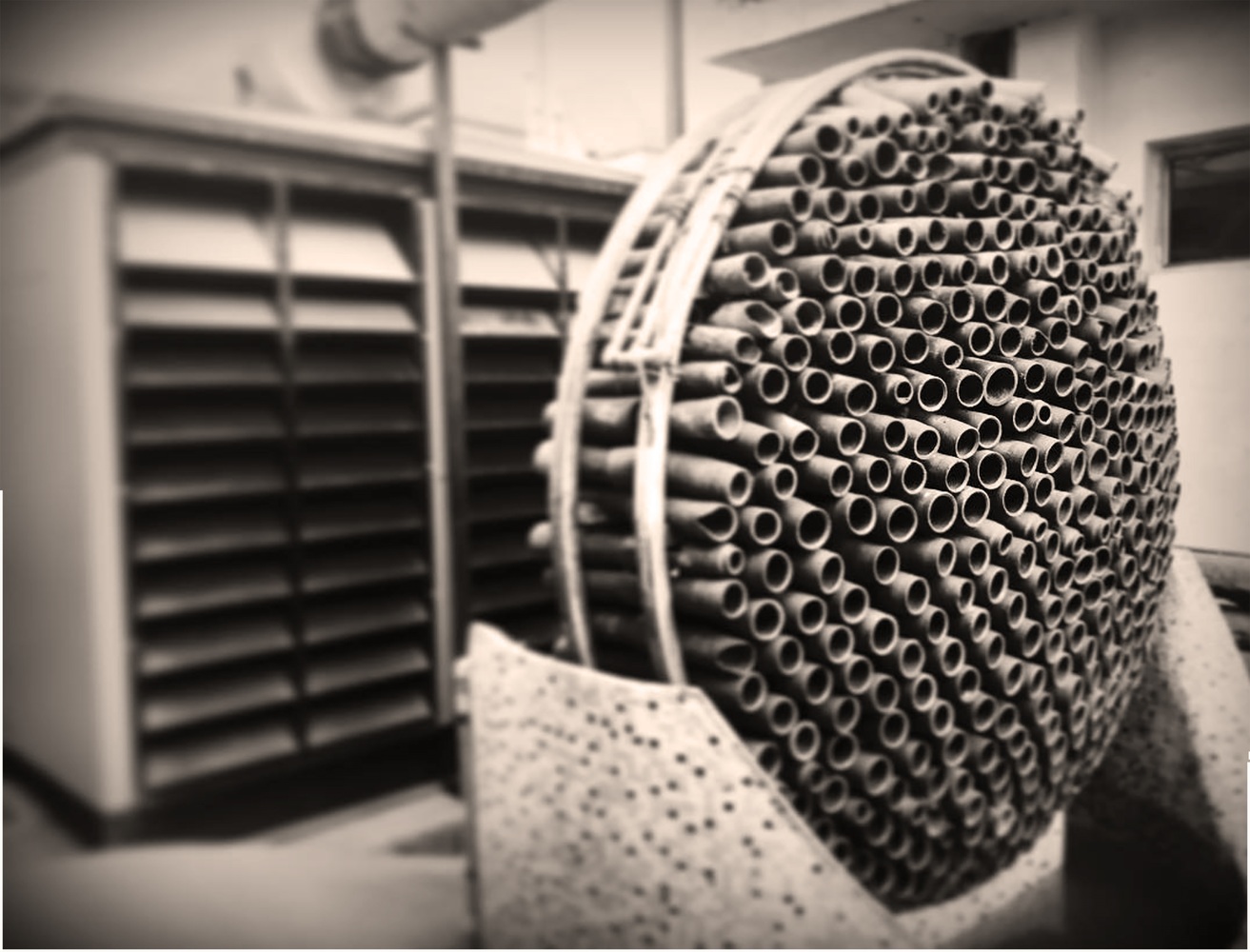
Credit: Ant Studio
Said Monish Siripurapu, founder of Ant Studio:
“I believe this experiment worked quite well functionally. Findings from this attempt opened up a lot more possibilities where we can integrate this technique with forms that could redefine the way we look at cooling systems, a necessary yet ignored component of a building’s functionality.
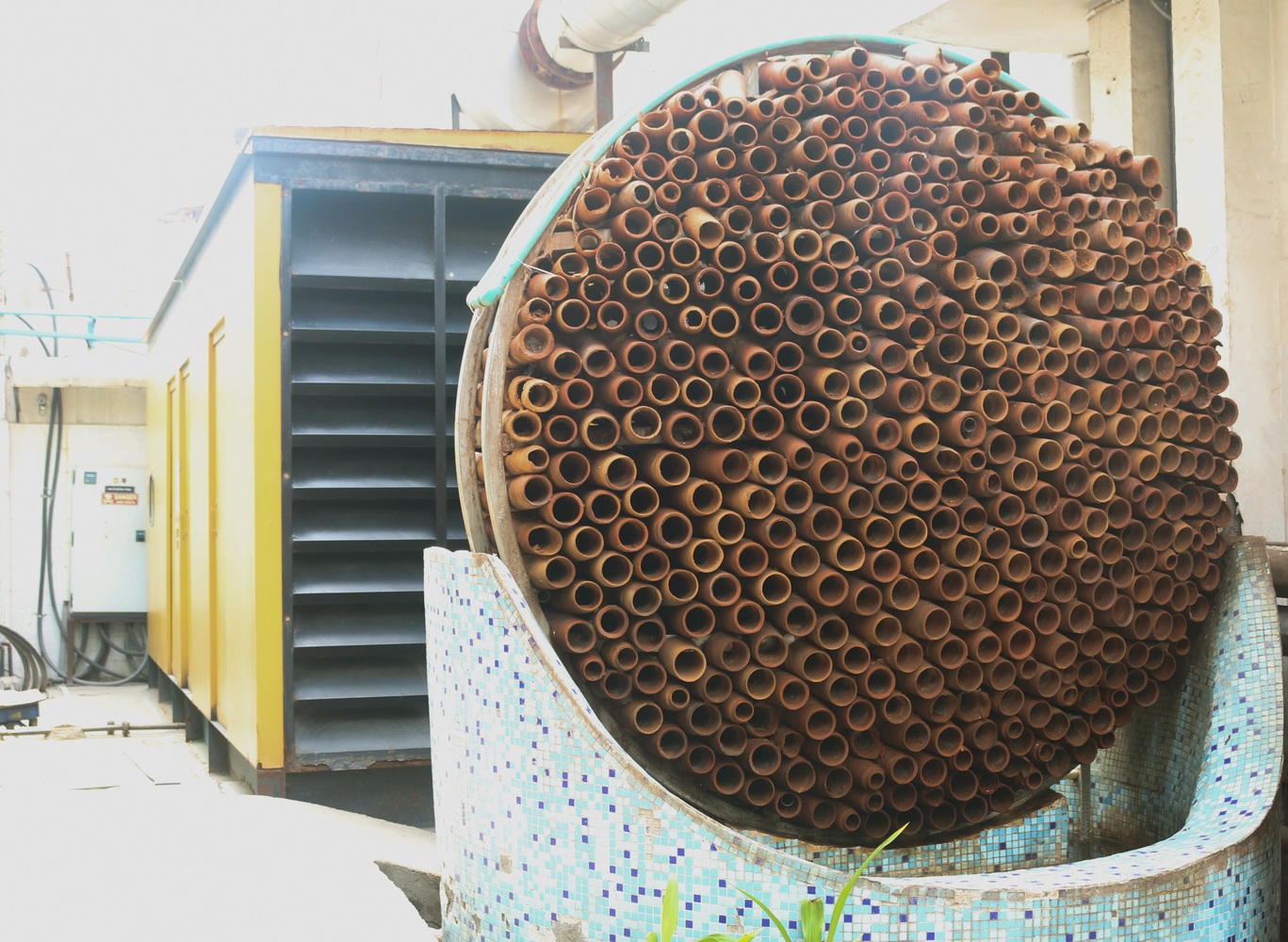
Credit: Ant Studio
By using cylindrical cones, a larger surface area is provided which maximizes the cooling effect. After recording the temperature of air flow around the installation, it was determined that the beehive-shaped unit is capable of cooling hot air at or above 50 °C (122 °F) to temperatures less than 36 °C around the structure.
“I believe this experiment worked quite well functionally. Findings from this attempt opened up a lot more possibilities where we can integrate this technique with forms that could redefine the way we look at cooling systems, a necessary yet ignored component of a building’s functionality,” said Monish. “Every installation could be treated as an art piece.”
The architects envision the invention cooling homes in poverty-stricken locations, as well as serving as an art installation that incorporates ancient cooling methods.
“The circular profile can be changed into an artistic interpretation while the falling waters lend a comforting ambience,” said the founder of Ant Studio. “This, intermingled with the sensuous petrichor from the earthen cylinders allow for it to work in any environment with the slightest of breeze. Having said that, there are many factories throughout the country that face a similar issue and this is a solution that can be easily adopted and a widespread multiplication of this concept may even assist the local potters.”
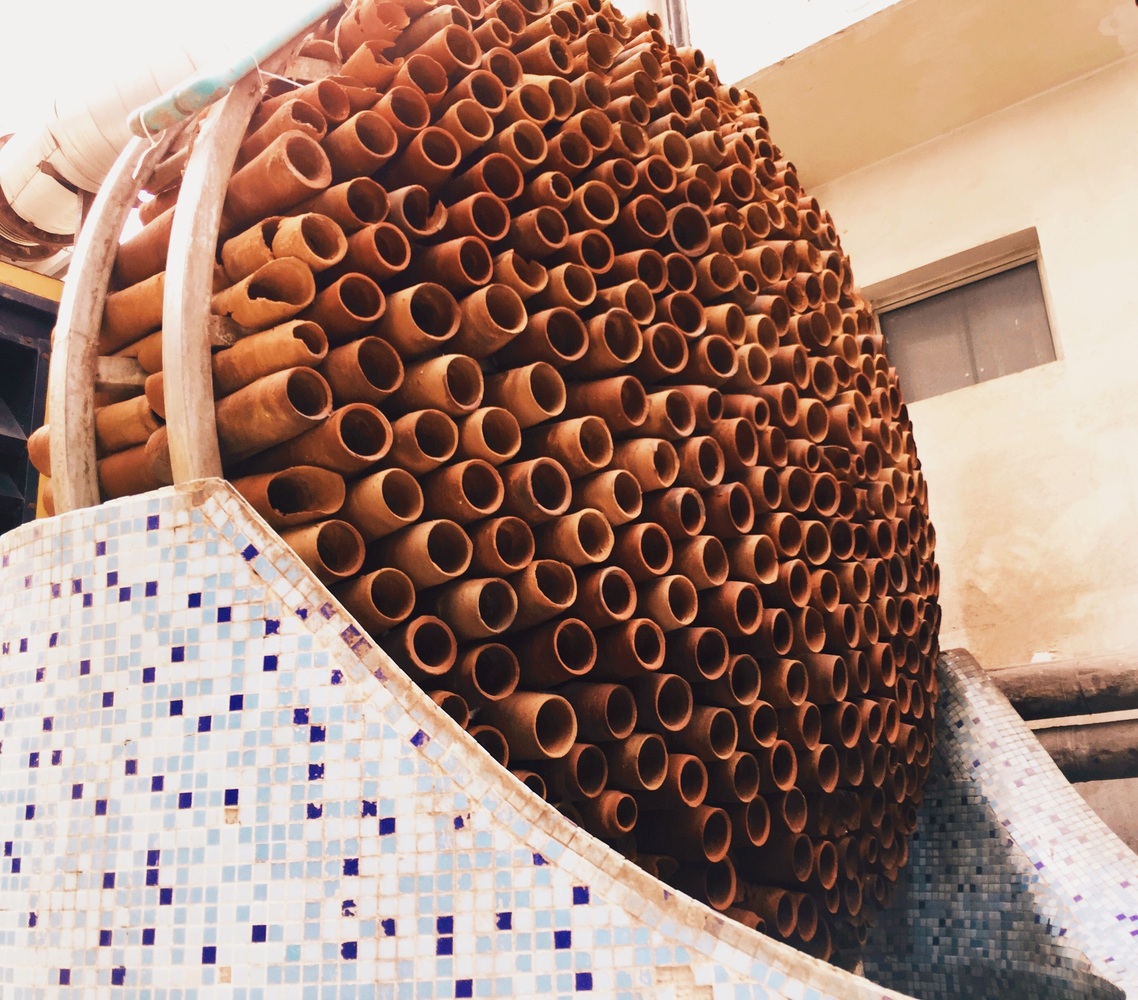
Credit: Ant Studio
Following are more photos of the innovative air conditioner:
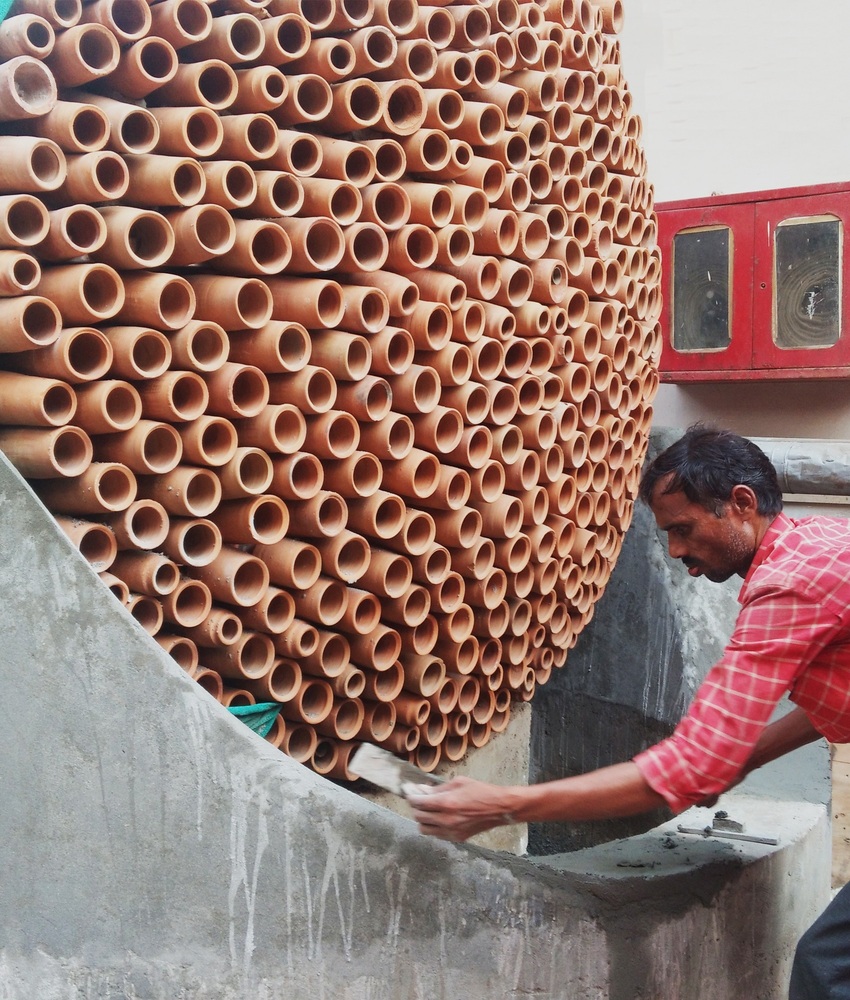
Credit: Ant Studio
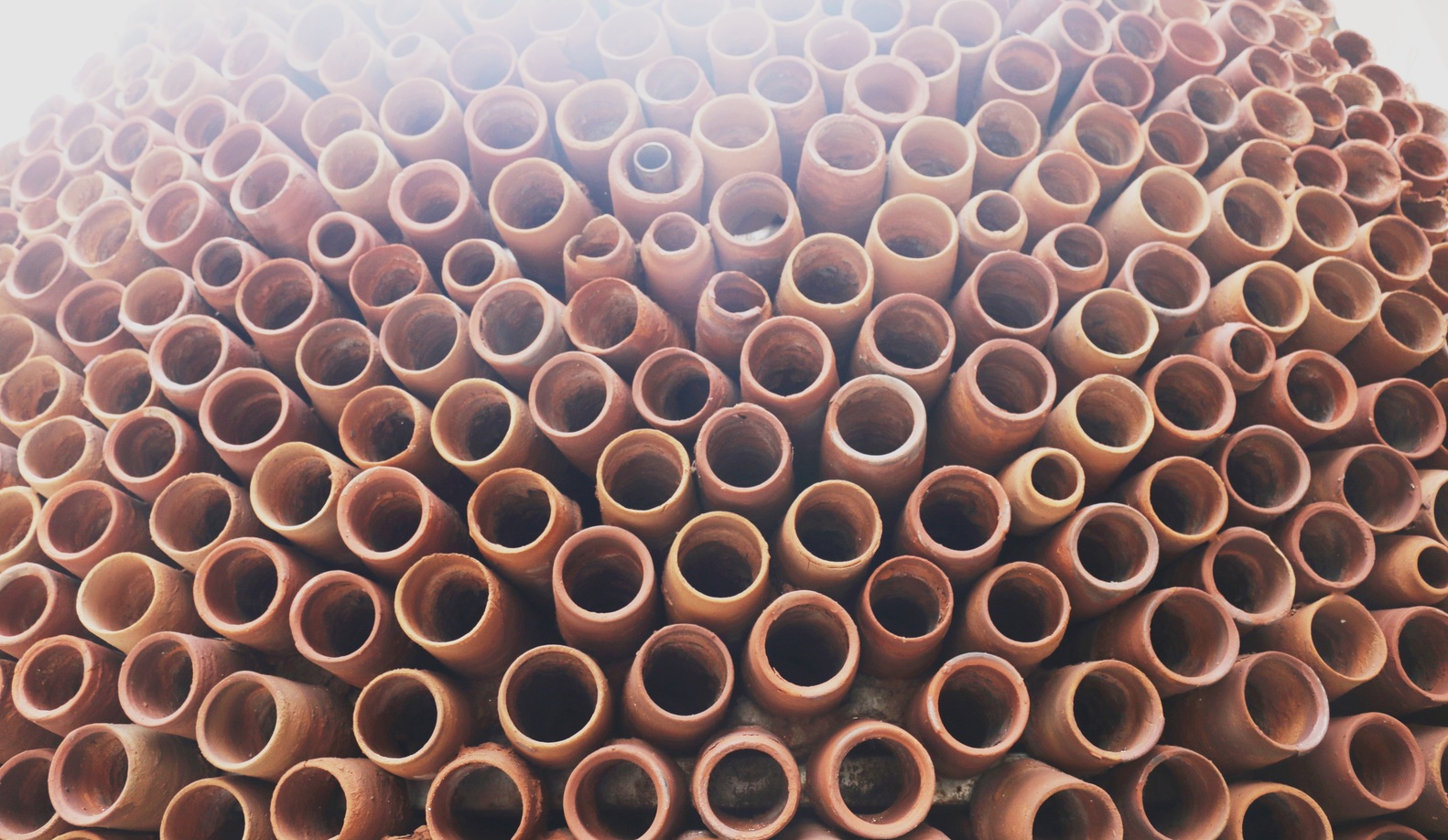
Credit: Ant Studio
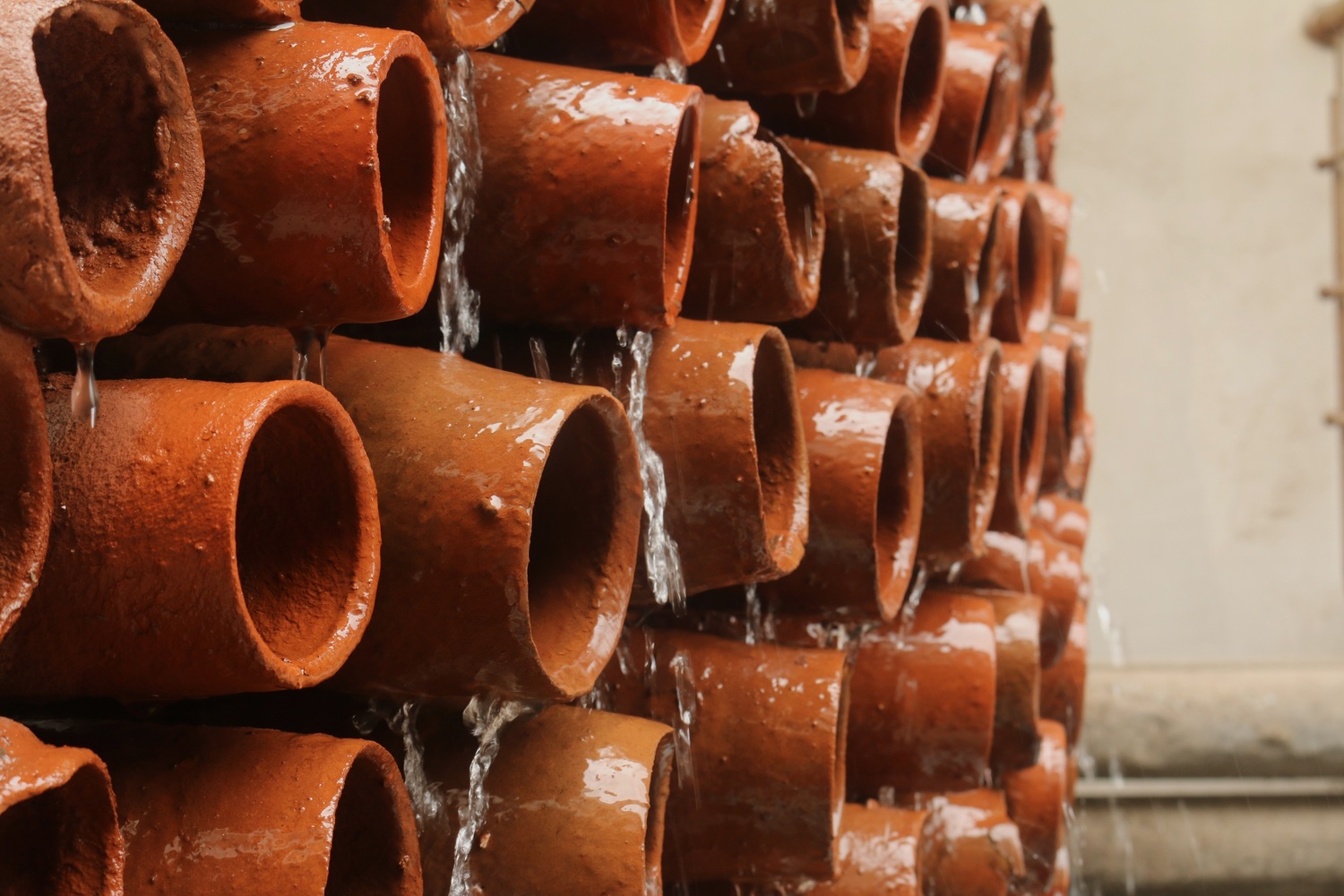
Credit: Ant Studio
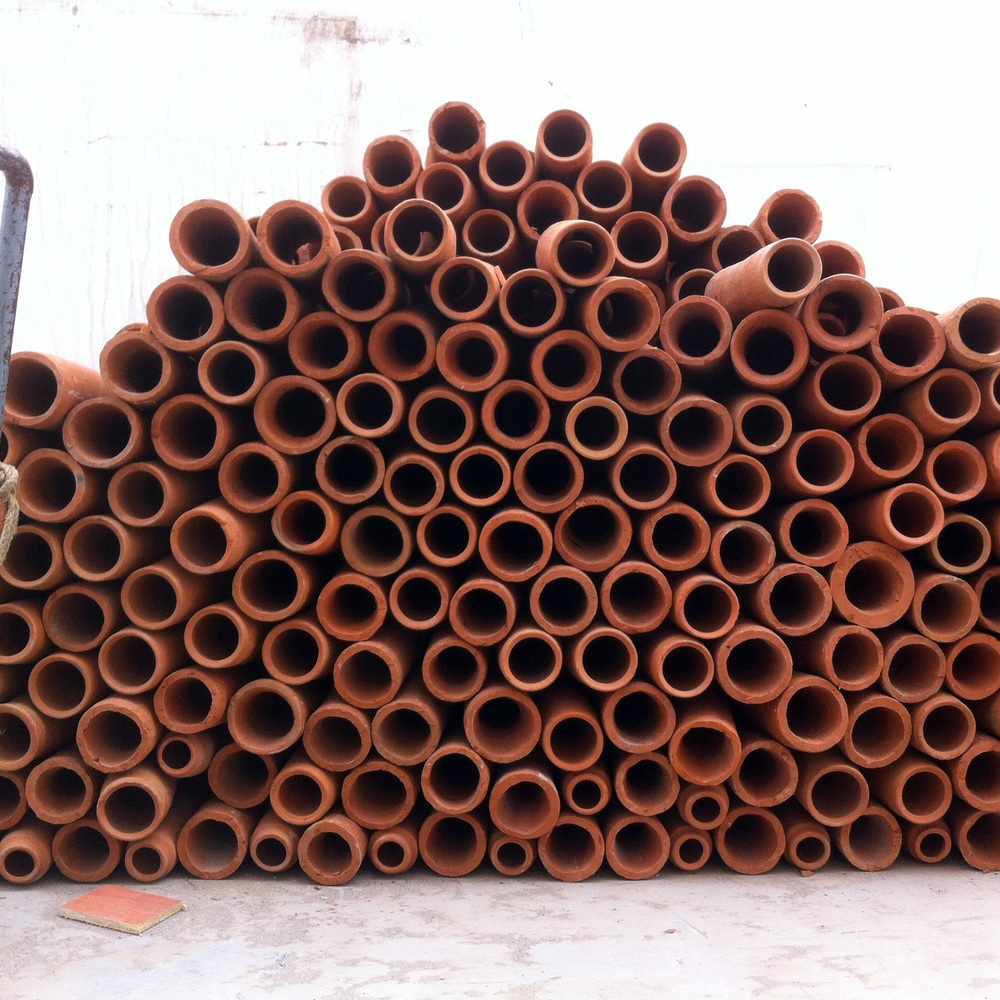
Credit: Ant Studio
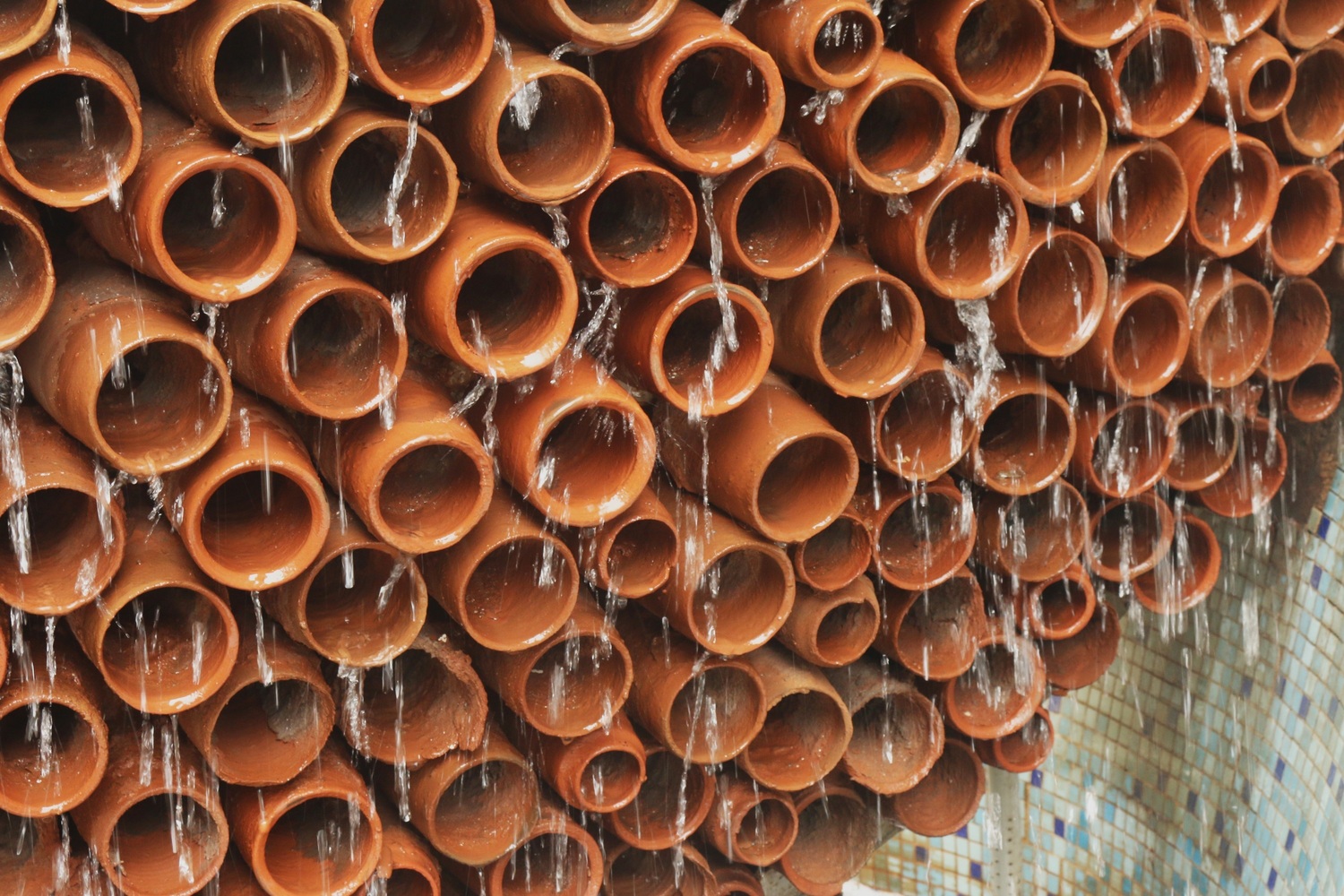
Credit: Ant Studio
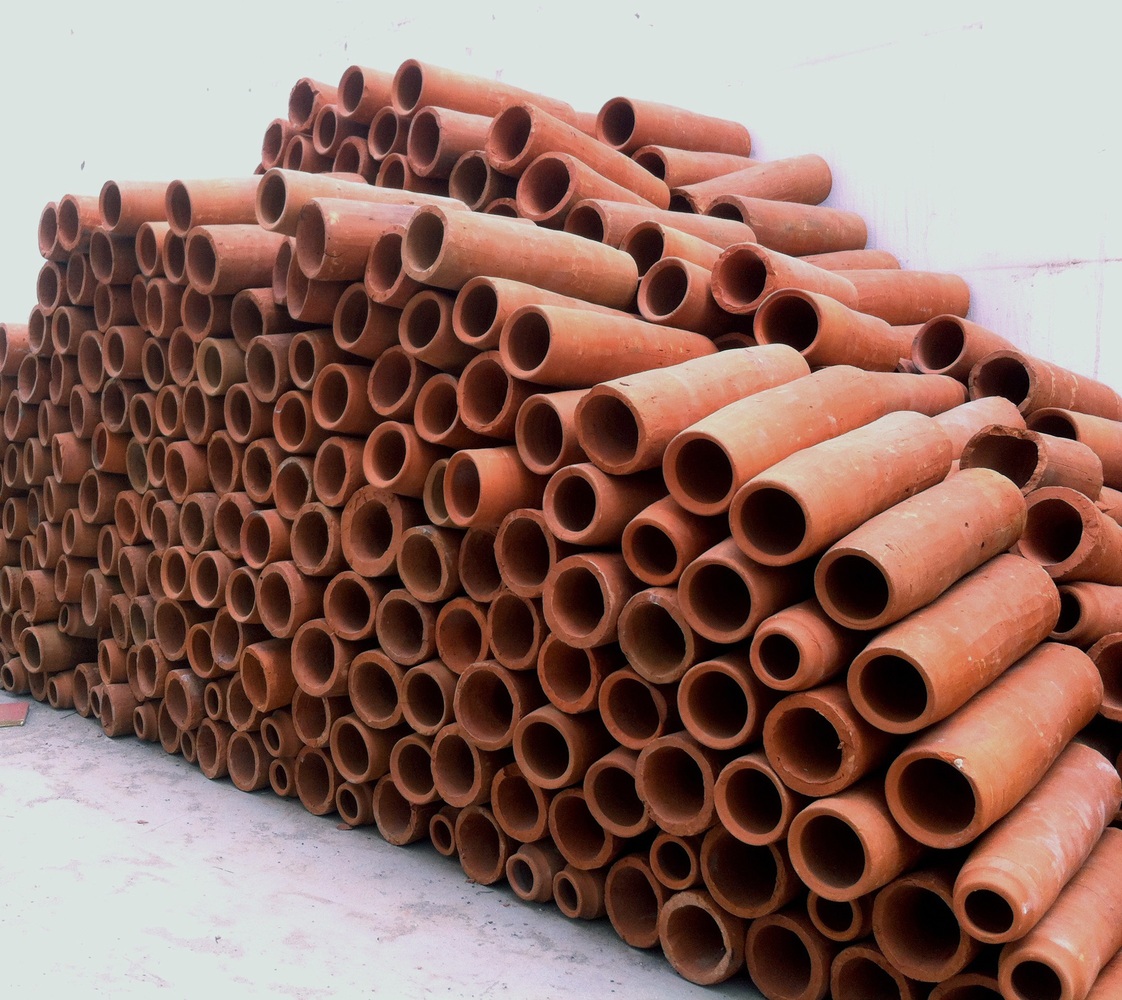
Credit: Ant Studio
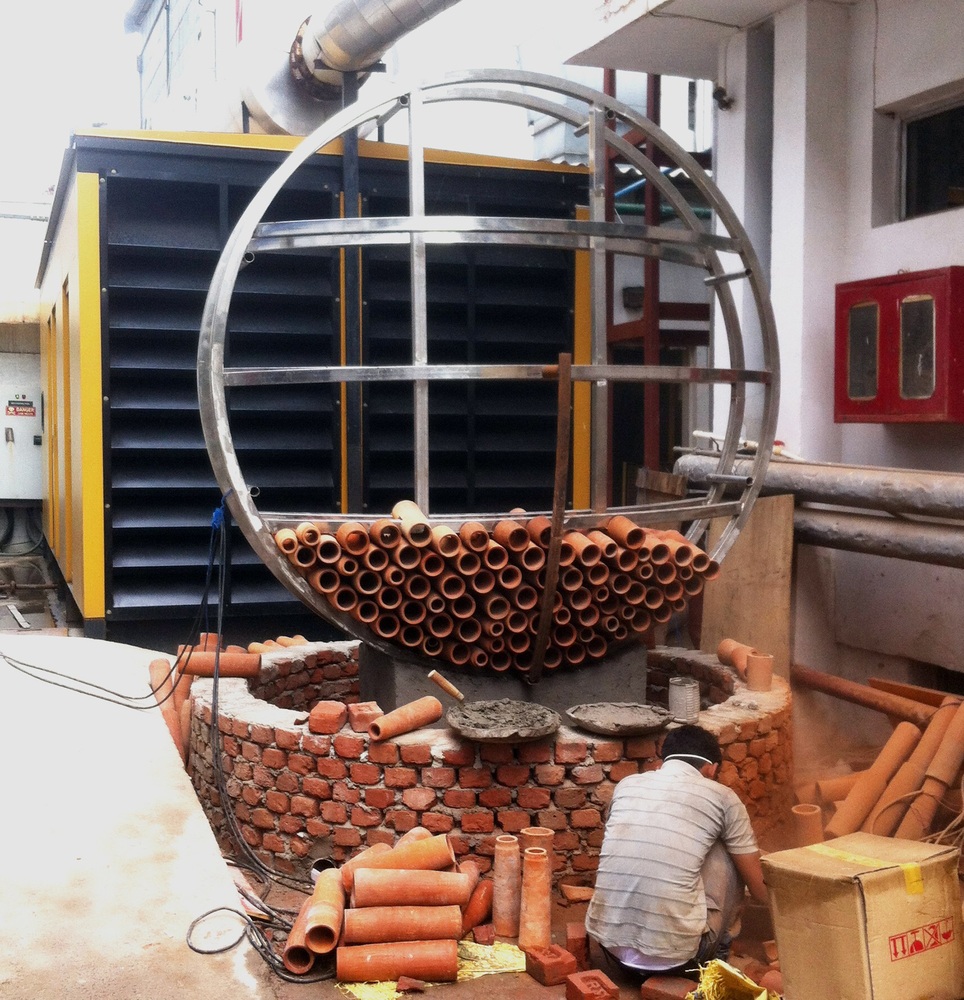
Credit: Ant Studio
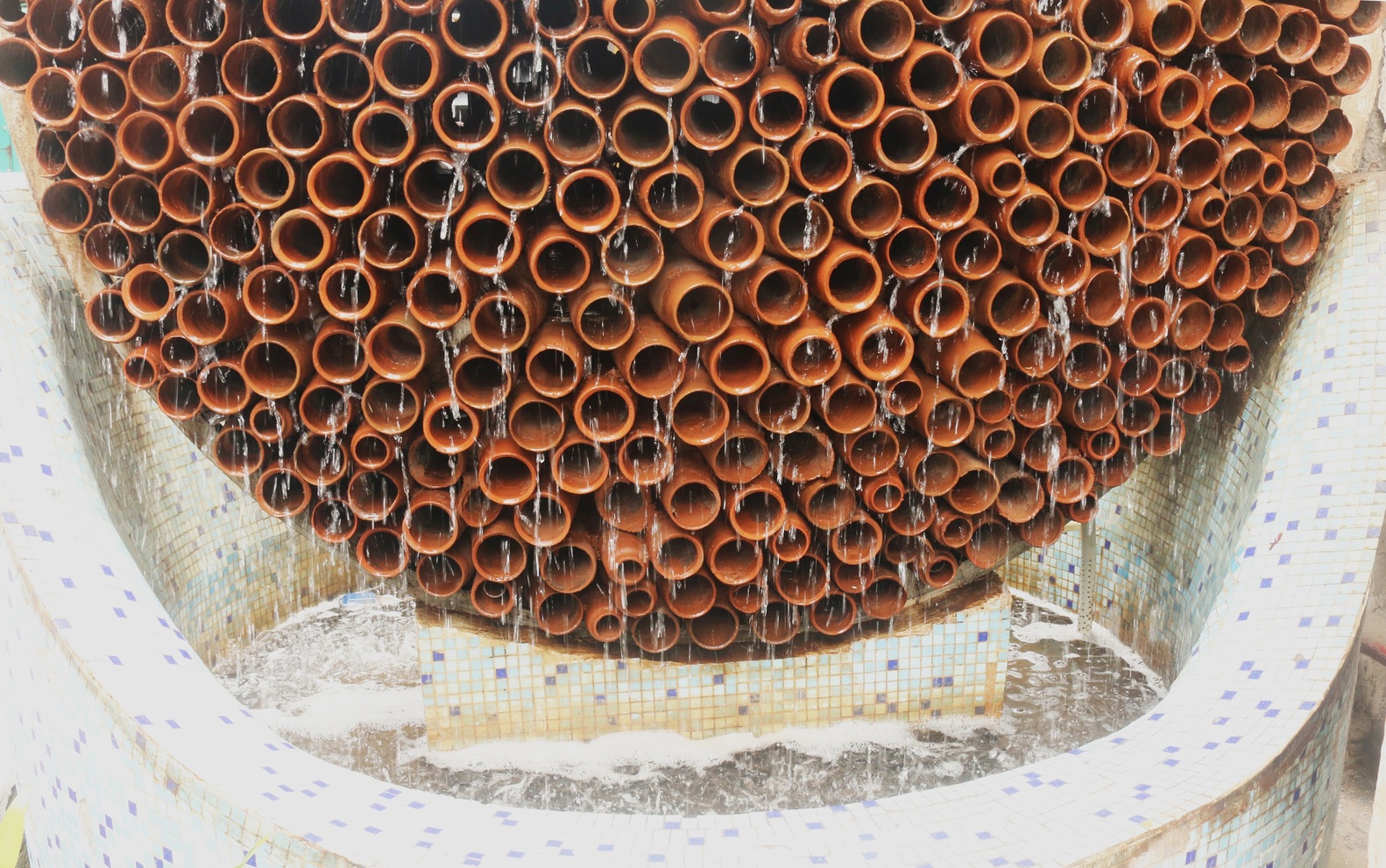
Credit: Ant Studio
h/t Arch Daily
Typos, corrections and/or news tips? Email us at Contact@TheMindUnleashed.com
